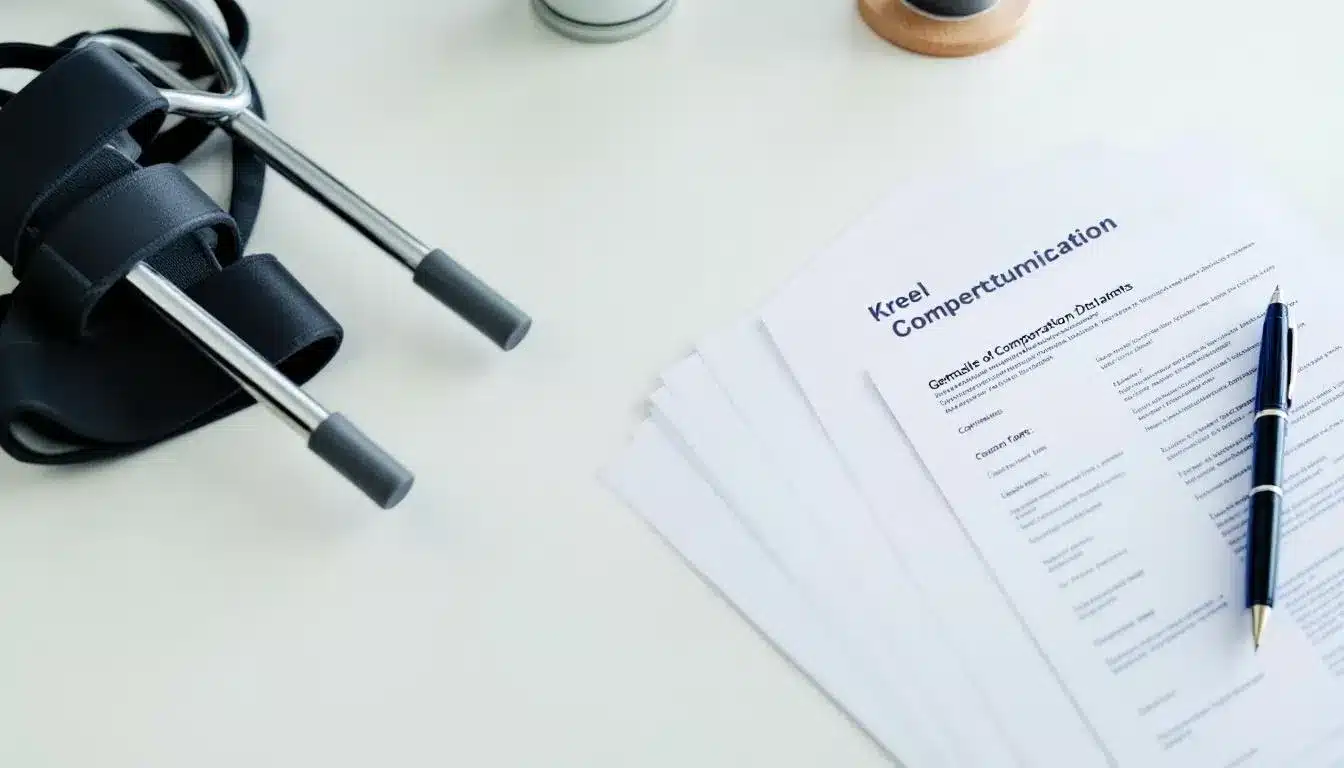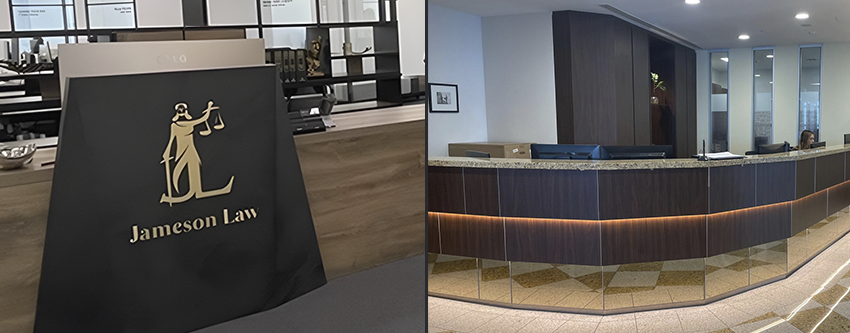Knee injuries can be life-changing, impacting your mobility, work, and quality of life. At Jameson Law, we understand the physical, emotional, and financial toll these injuries can take.
This guide will explore the various types of knee injuries eligible for compensation and the factors that influence knee injury compensation amounts in Australia. We’ll also provide insights into average payouts to help you understand what you might be entitled to.
What Knee Injuries Qualify for Compensation?
Knee injuries can significantly impact your daily life and work capacity. In Australia, various types of knee injuries qualify for compensation. Let’s explore some of the most common types.
Ligament and Meniscus Injuries
Ligament tears, particularly to the Anterior Cruciate Ligament (ACL), occur frequently in workplace accidents and sports-related incidents. These injuries often cause instability and chronic pain. Meniscus tears, which affect the cartilage that cushions the knee joint, also happen regularly. Both types of injuries typically require surgery and extensive rehabilitation.
The Australian Institute of Health and Welfare reports on knee ligament and meniscus injuries in Australia. This underscores the prevalence of these injuries and their potential for compensation claims.
Fractures and Dislocations
High-impact accidents or falls usually cause knee fractures and dislocations. These injuries can be particularly severe, often necessitating surgical intervention and prolonged recovery periods. In some cases, they may result in permanent disability or the need for joint replacement.
According to the Australian Orthopaedic Association National Joint Replacement Registry, there has been a significant increase in knee replacement surgeries in Australia. Many of these surgeries addressed severe trauma or fractures.
Work-Related Osteoarthritis
Repetitive stress or previous knee injuries in the workplace can lead to osteoarthritis over time. Industries involving heavy lifting, kneeling, or squatting pose a particularly high risk. This condition often causes chronic pain and reduced mobility, potentially ending careers prematurely.
Safe Work Australia data reveals that in 2019-2020, over 6,000 serious claims for knee injuries and diseases (including osteoarthritis) resulted in an average of 5.4 weeks off work.
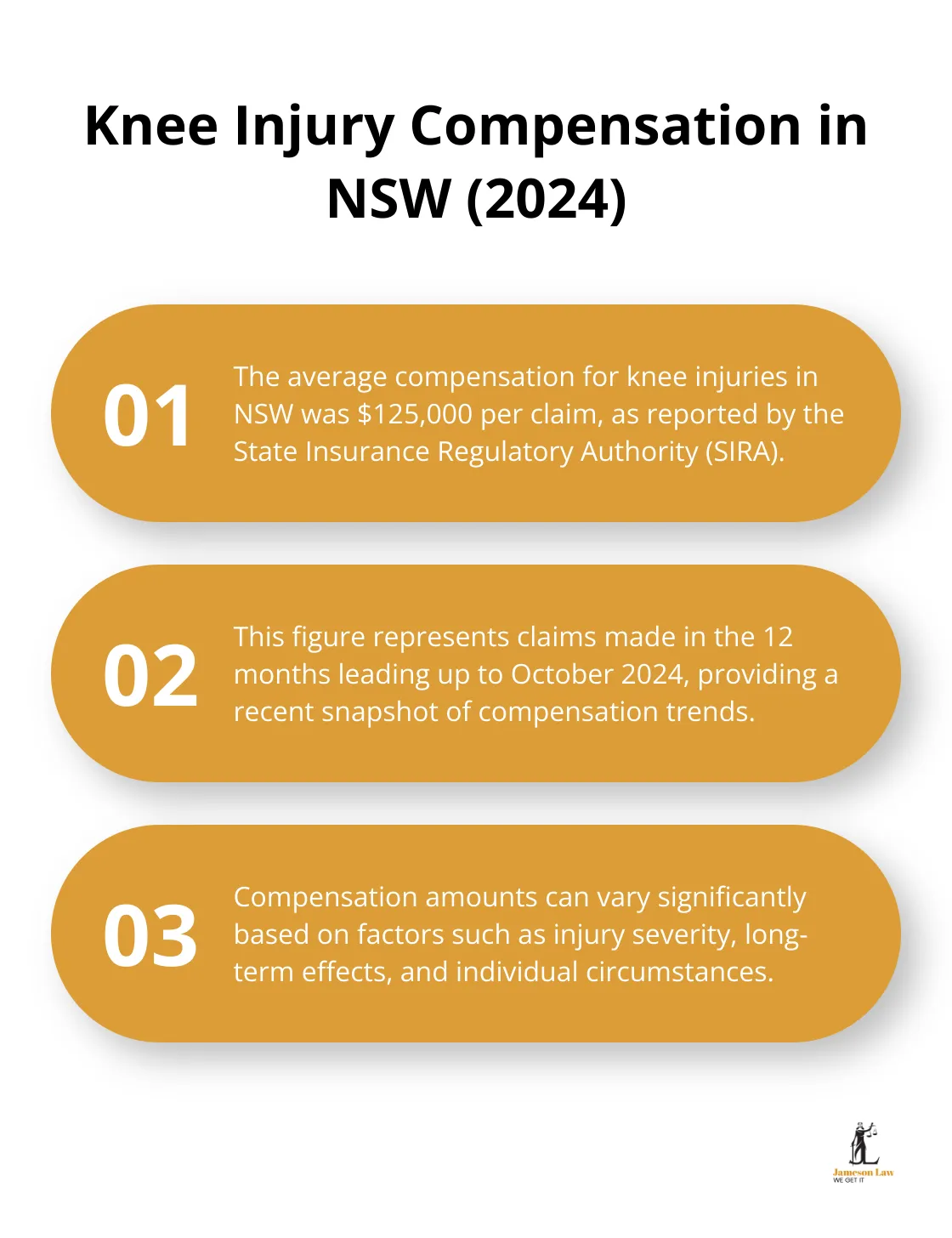
Slip and Fall Accidents
Slip and fall accidents in public places or workplaces frequently result in knee injuries. These incidents can cause a range of injuries, from minor sprains to severe ligament tears or fractures. The severity of the injury often depends on factors such as the force of impact and the individual’s age and health condition.
Repetitive Strain Injuries
Certain occupations that involve repetitive knee movements or prolonged periods of kneeling can lead to repetitive strain injuries. These injuries develop gradually over time and can cause significant pain and mobility issues. Industries such as construction, plumbing, and flooring installation often see higher rates of these types of knee injuries.
Time limits apply for compensation claims, and early intervention can significantly impact your claim’s success. If you’ve suffered a knee injury at work or in a public place, seeking legal advice promptly is essential. A skilled personal injury lawyer can guide you through the process and help you understand your rights and options for compensation.
The next section will explore the various factors that influence knee injury compensation amounts in Australia, providing insight into what you might expect from your claim.
What Impacts Knee Injury Compensation?
Injury Severity and Long-Term Effects
The severity of your knee injury significantly influences compensation amounts in Australia. Minor sprains typically result in smaller payouts, while severe injuries (such as complex fractures or ligament tears leading to permanent disability) can attract much higher compensation.
The State Insurance Regulatory Authority (SIRA) in NSW reports that average compensation for knee injuries in the 12 months to October 2024 was $125,000 for every new claim reported.
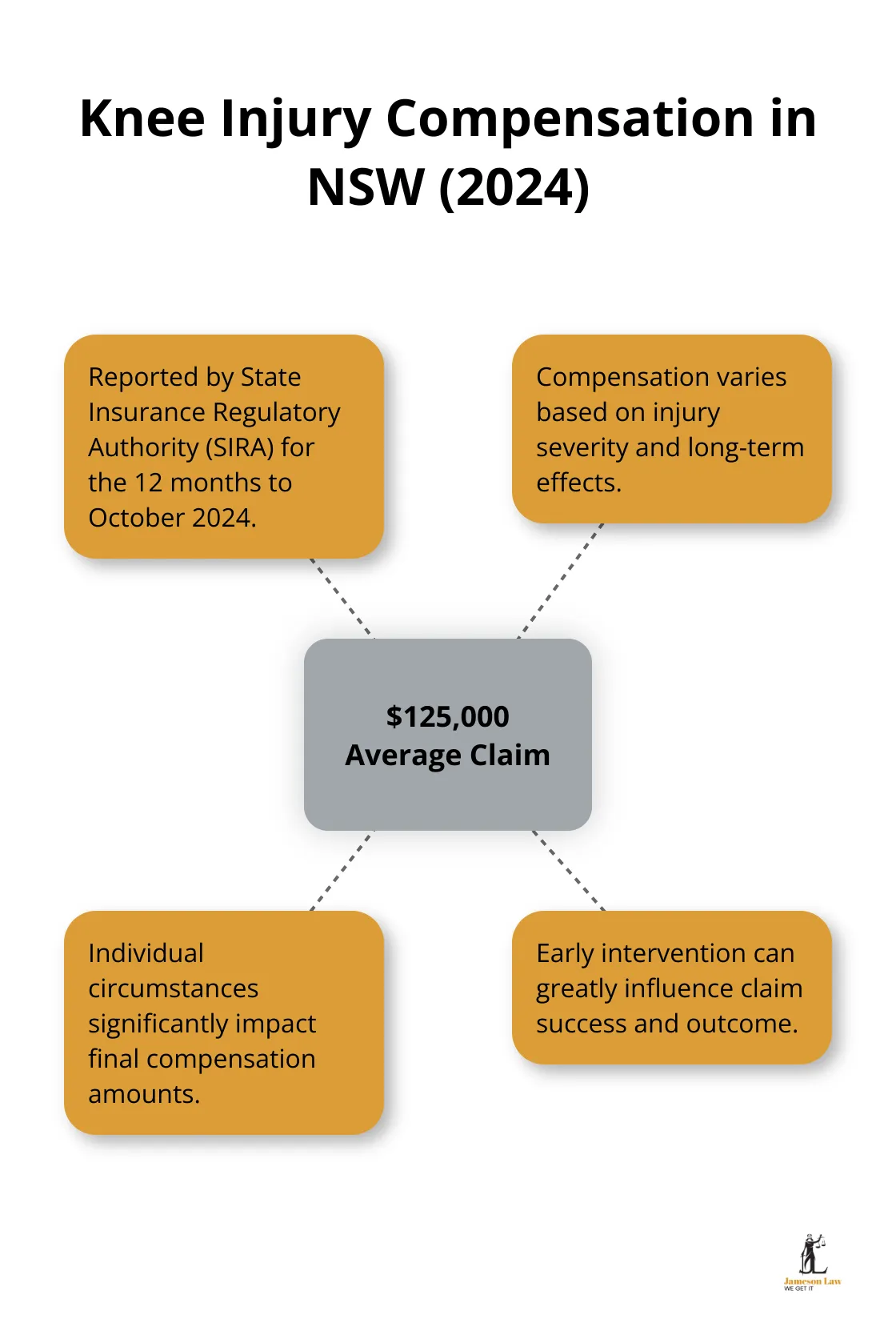
Medical and Rehabilitation Costs
Your compensation will typically cover all reasonable medical expenses related to your knee injury. This includes immediate treatment, surgeries, physiotherapy, and any necessary assistive devices.
The Australian Government estimates that the cost of a knee replacement, taking into account specialist fees and hospital fees, would be around $22,900. For complex cases requiring multiple surgeries and extensive rehabilitation, medical costs can easily exceed $100,000.
Income Loss and Future Earning Capacity
If your knee injury has forced you to take time off work or reduced your ability to earn, this will factor into your compensation. For long-term or permanent disabilities, the impact on your future earning capacity is also considered.
WorkCover Queensland data shows that for minor injuries (e.g. sprains, cuts, light strains), the time off work is typically 1-4 weeks, with some severe cases resulting in permanent inability to return to previous employment.
Pain, Suffering, and Quality of Life
Compensation for pain and suffering (also known as general damages) addresses the non-economic impact of your injury. This can include physical pain, emotional distress, and loss of enjoyment of life.
In NSW, the maximum amount for general damages as of 2025 is capped at $350,000 for the most extreme cases. However, most knee injury claims will fall well below this maximum.
Age and Pre-existing Conditions
Your age and any pre-existing conditions can affect your compensation. Younger individuals may receive higher payouts due to the longer-term impact on their lives and careers. Pre-existing knee conditions might complicate claims, potentially reducing compensation if the injury is seen as an aggravation of an existing issue rather than a new injury.
A study by the Monash University Accident Research Centre found that workers over 55 were more likely to have pre-existing conditions that affected their injury claims, often resulting in more complex and prolonged claim processes.
These factors interact in complex ways to determine the final compensation amount for knee injuries in Australia. The next section will provide insight into average compensation amounts for different types of knee injuries, helping you understand what you might expect from your personal injury claim.
How Much Can You Expect for Knee Injury Compensation?
Average Compensation Ranges
The total amount payable for a pain and suffering claim is indexed each year and the current maximum is $722,000 for knee injuries. However, this figure varies widely depending on the injury’s severity.
Minor knee injuries (such as sprains or mild ligament damage) typically result in compensation between $5,000 and $20,000. These injuries usually heal within a few weeks to months and have minimal long-term impact.
Moderate knee injuries (including partial ligament tears or meniscus damage requiring surgery) often lead to compensation between $20,000 and $50,000. These injuries may require more extensive medical treatment and rehabilitation, potentially affecting work capacity for several months.
Severe knee injuries (such as complete ligament ruptures, complex fractures, or injuries leading to chronic pain or disability) can attract compensation upwards of $50,000, potentially exceeding $150,000 in some cases. The Australian Orthopaedic Association National Joint Replacement Registry has noted a shortfall in elective joint replacement procedures, with 13,590 fewer surgeries in 2020 and 9,555 fewer in 2021.
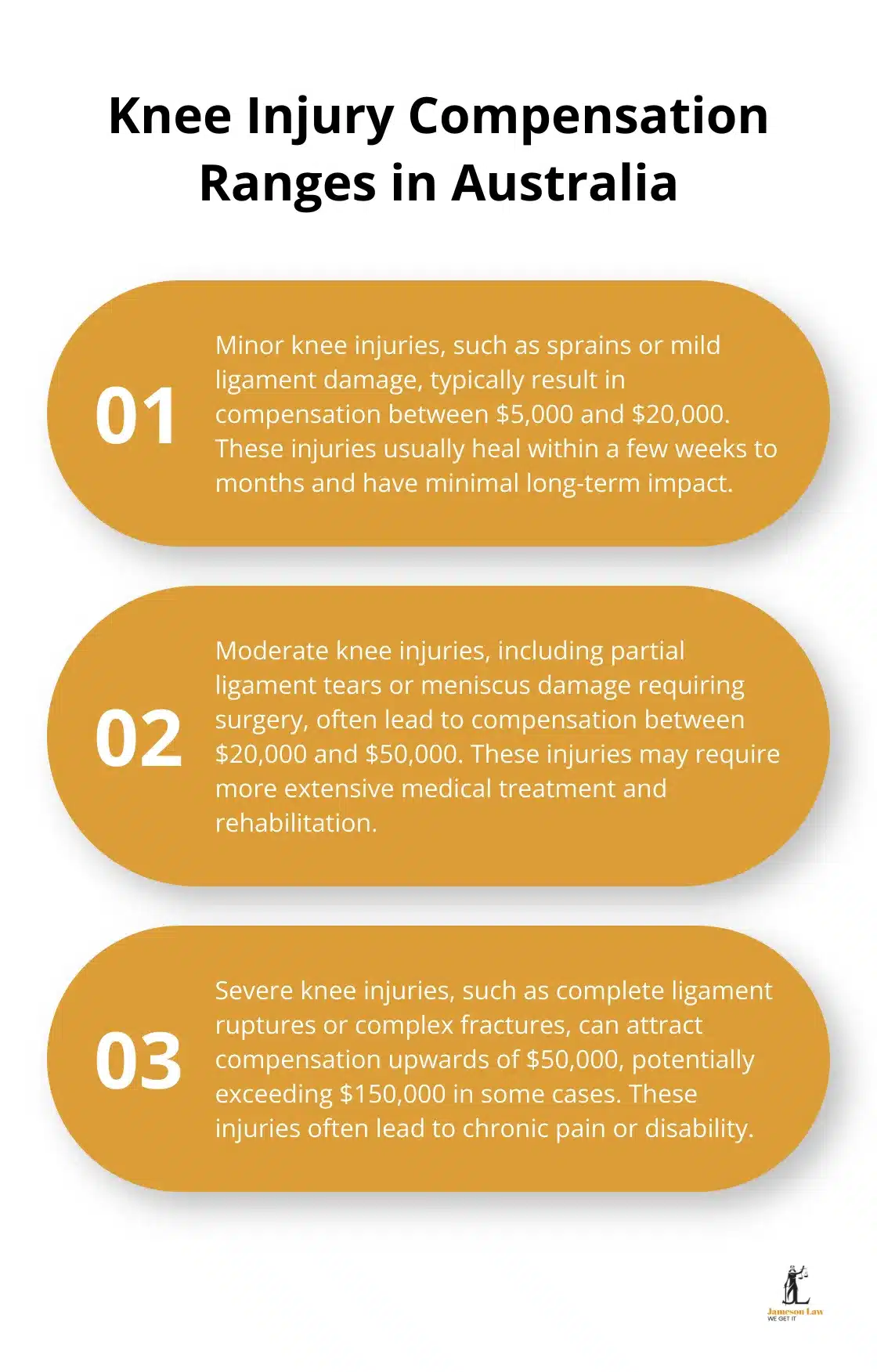
Factors That Increase Compensation
Several factors can push compensation amounts towards the higher end of these ranges:
- Permanent disability: If the injury prevents you from returning to your previous occupation or severely limits your earning capacity, you may qualify for substantial compensation.
- Ongoing medical treatment: If your knee injury requires multiple surgeries, extensive physiotherapy, or lifelong pain management, these future medical costs will factor into your claim.
- Age: Younger individuals may receive higher compensation due to the longer-term impact on their careers and quality of life. However, older individuals
- can still receive substantial compensation, especially if the injury significantly affects their retirement plans or independence.
- Injury circumstances: Workplace injuries that result from employer negligence or accidents in public spaces due to clear safety breaches may lead to higher payouts.
The Importance of Individual Assessment
These figures serve as general guidelines. Your specific compensation will depend on the unique circumstances of your case. A thorough assessment of each case ensures the pursuit of maximum compensation possible for clients.
Time limits apply for compensation claims, and early intervention can significantly impact your claim’s success. If you’ve suffered a knee injury, seek prompt legal advice to understand your rights and options fully.
Final Thoughts
Knee injury compensation amounts in Australia vary significantly based on injury severity, long-term impacts, and individual circumstances. Payouts range from $5,000 for minor injuries to over $150,000 for severe cases, but each claim requires careful assessment. Individuals who have suffered a knee injury should take prompt action, seek immediate medical attention, and document all aspects of their injury and its impact on their life.
Expert legal advice plays a vital role in navigating the complexities of personal injury law and securing fair compensation. Jameson Law specialises in personal injury claims and understands the factors that influence knee injury compensation amounts in Australia. Our team can provide tailored guidance and help you navigate the claims process effectively.
Time limits apply for compensation claims, and early intervention can significantly impact your claim’s success. Don’t let uncertainty compromise your right to fair compensation – take the first step towards protecting your future today. Our experienced professionals will work tirelessly to secure the maximum compensation you deserve while you focus on your recovery.



